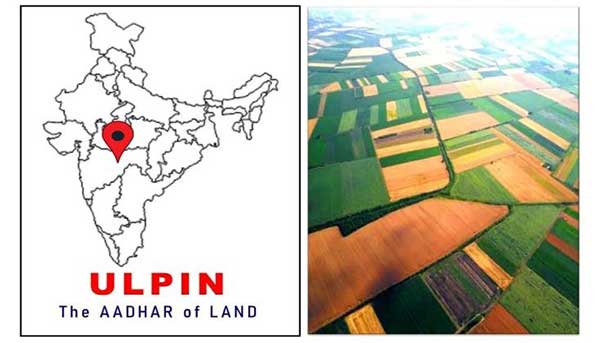Date: 15/04/2023
Relevance: GS-3: Land Reforms in India
Key Phrases: Immovable property, Bhu-Aadhaar, land acquisition, Fragmented legal framework, Ambiguity and inconsistency, land tenure security, Unified Land Parcel Identification Number.
Context:
- Recently there was a national conference on Bhu-Aadhaar. With “bhu” meaning earth/land, Bhu-Aadhaar is good coinage.
- More people may recognise this as Unique Land Parcel Identification Number (ULPIN).
Key Highlights:
- Once the digitisation process of land records and registration is complete, it will help mitigate the huge pendency of court cases involving land disputes.
- The GDP loss to the country’s economy is about 1.3 per cent due to projects being stalled over litigation involving land disputes.
- A study says, 66 per cent of all civil suits in India are related to land or property disputes, and the average pendency of a land acquisition dispute is 20 years.
- The loss of productivity due to attending court hearings because of wages and business loss comes to 0.48 per cent of the Indian GDP.
- 17 per cent of all disputes at the Delhi High Court are related to immovable property.
- Tenancy disputes are the most common type of litigation, closely followed by land acquisition-related matters.
- The land is, a state subject and land rights are a complex bundle of rights.
Limitations of the current land laws in India
- Fragmented legal framework:
- The land laws in India are spread across multiple central and state legislations, making it complicated for stakeholders to navigate and comply with them.
- This fragmented legal framework also creates opportunities for ambiguity and conflict in the interpretation and implementation of the laws.
- Ambiguity and inconsistency in land titles:
- The lack of a reliable and transparent system of land registration and titling has resulted in ambiguity and inconsistency in land ownership and use.
- This has led to disputes, litigation, and delays in land transactions.
- Weak land tenure security:
- The land laws in India do not provide strong protections for land tenure security, especially for marginalized communities, women, and small farmers.
- This has resulted in land grabbing, eviction, and displacement, which often have a disproportionate impact on vulnerable populations.
What is Bhu-Aadhaar and what are its potential benefits in India?
- ULPIN (Unified Land Parcel Identification Number) is a unique identification system for land parcels that have been introduced in India.
- It assigns a unique 14-digit alphanumeric code to each land parcel, which can be used to identify the exact location and ownership of the land.
- The first two digits represent the state code, the next four digits represent the district code, the following seven digits represent the survey number of the land parcel, and the final digit is a check digit.
- ULPIN is a part of the Digital India Land Record Modernisation Programme (DILRMP), which aims to modernize land records in India through the use of technology.
- Potential Benefits:
- Accuracy: Digitization of land records ensures that the data is accurate and up-to-date, reducing the chances of errors and disputes.
- Transparency: ULPIN and DILRMP increase transparency in land transactions, making it easier to track the ownership of land and prevent fraudulent activities.
- Speed: Digitization of land records reduces the time required to access and process land-related documents, leading to faster transactions and approvals.
- Economic development: Accurate and up-to-date land records facilitate economic development by providing a clear picture of land ownership and enabling efficient land use.
- Technology helps and hand-held devices can lock in latitude-longitude coordinates and marry land records with satellite imagery.
- Challenges associated with it:
- Infrastructure: Digitization of land records requires a robust IT infrastructure, which may not be available in some parts of the country.
- Technical expertise: The implementation of ULPIN and DILRMP requires technical expertise, which may be a challenge to find in some areas.
- Resistance to change: There may be resistance to change from stakeholders who are used to the traditional paper-based system.
- Cost: Digitization of land records requires significant investments in IT infrastructure and manpower, which may be a challenge for some states and regions.
- Cadastral maps will typically not have latitude/longitude data. There may be elevation and projection problems.
Way Forward:
- Given the history and the complex nature of land laws, this certainly cannot be accomplished by March 2024 (or even March 2026), both target dates. However, this is not a fair way to look at ULPIN.
- ULPIN isn’t binary, where everything has to be accomplished by a certain date. It is more about incremental improvements.
- There are parts where land titles and records are in a mess, cleaning up requiring a gargantuan effort.
- But there are parts where titles and records are clean. Those can readily have their ULPIN, those efficiency gains acting like a demonstration effect for others to come on board.
Source: The Hindu
Mains Question:
Q. Analyze the significance of ULPIN and the Digital India Land Record Modernisation Programme (DILRMP) in modernizing land records in India. Discuss the potential benefits and challenges associated with the implementation of these initiatives. (250 Words).







